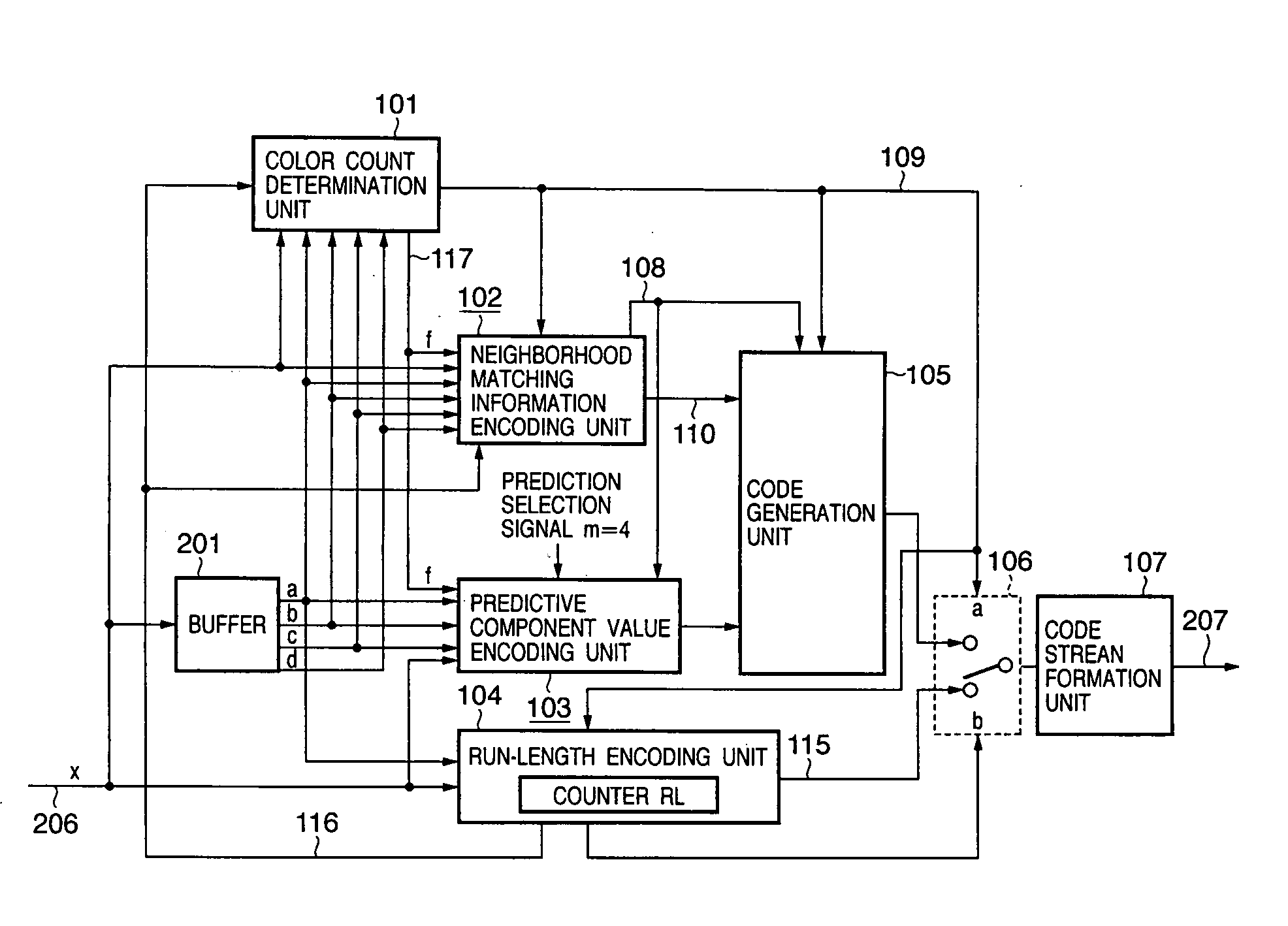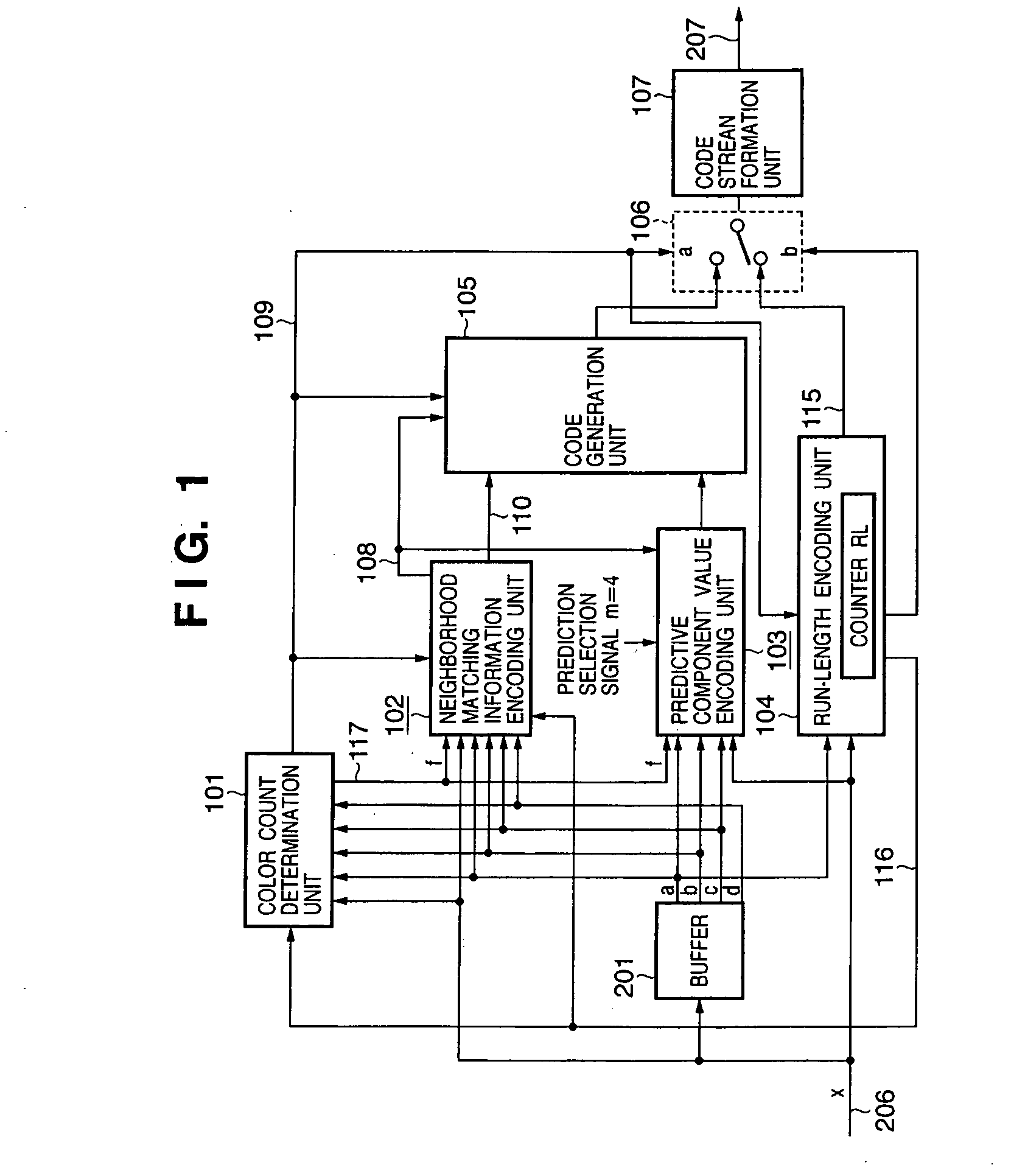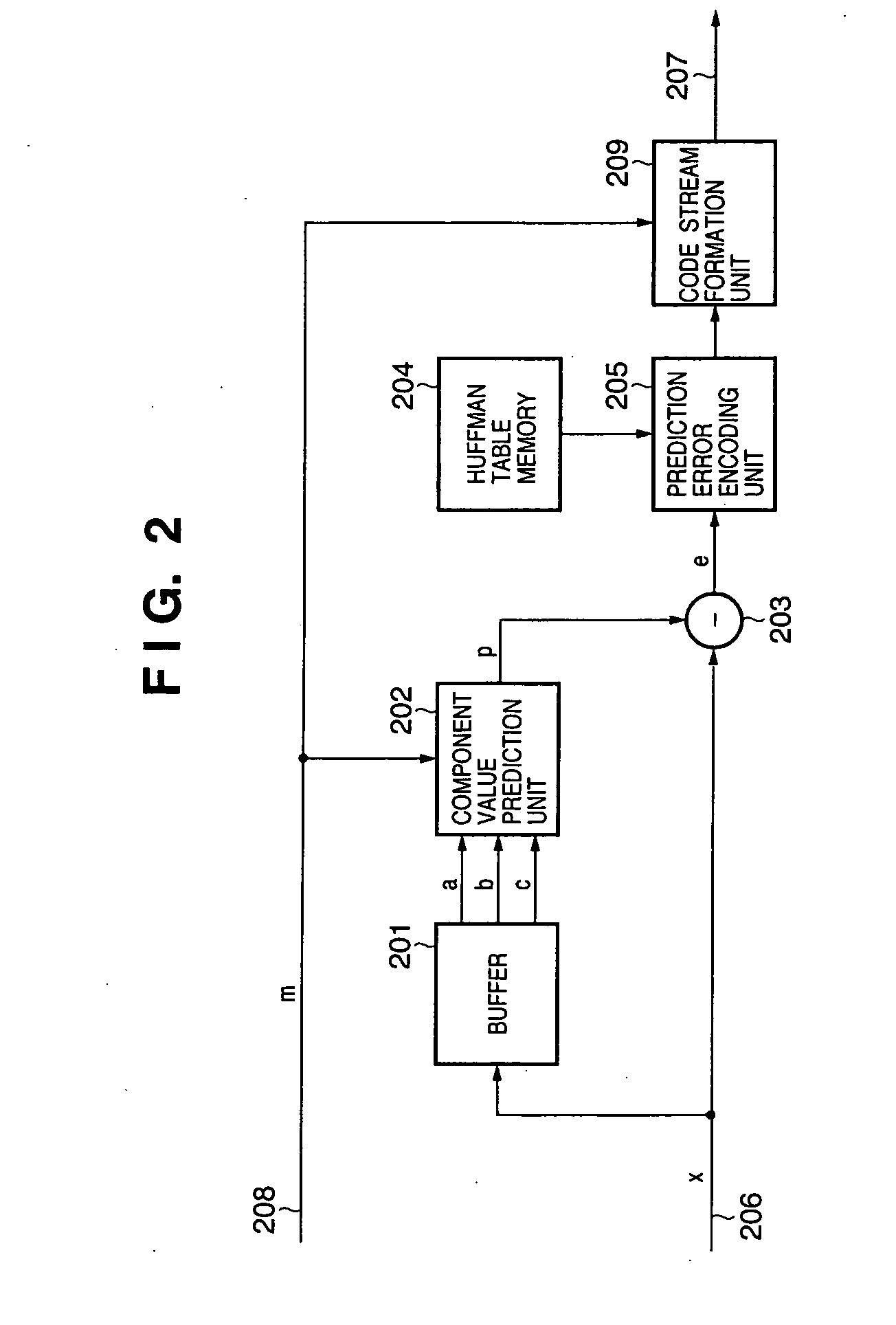Image encoding apparatus and method, computer program, and computer-readable storage medium
a technology of image data and encoding method, applied in the field of encoding image data, can solve the problems of insufficient method of efficiently encoding data while switching encoding techniques and using them, and achieve the effect of efficient coding data
- Summary
- Abstract
- Description
- Claims
- Application Information
AI Technical Summary
Benefits of technology
Problems solved by technology
Method used
Image
Examples
first embodiment
[0055]FIG. 1 is a block diagram showing an image encoding apparatus according to the first embodiment. As shown in FIG. 1, the image processing apparatus according to the first embodiment comprises a color count determination unit 101, neighborhood matching information encoding unit 102, predictive component value encoding unit 103, run-length encoding unit 104, code generation unit 105, switch 106, code stream formation unit 107, and buffer 201. In FIG. 1, reference numerals 108, 109, 110, 206, and 207 denote signal lines. The same reference numerals denote blocks which perform the same operations as those of the processing blocks of the conventional image processing apparatus, and a description thereof will be omitted. An image encoding process in the apparatus of FIG. 1 will be explained. In the first embodiment, the prediction selection signal m=4.
[0056] Image data to be encoded by the image processing apparatus according to the first embodiment is image data of R, G, and B col...
second embodiment
[0155] In the first embodiment, when the pixel X of interest ends the run and a predicted value for predictive encoding is obtained, “f”, “b”, and “c” are used by replacing the pixel “a” in the reference pixels “a”, “b”, and “c” with the reference pixel “f” which ends the run in previous run-length encoding. In the second embodiment, a plurality of colors of pixels which end runs before the pixel X of interest are stored as reference pixels “f”, and a pixel whose color appears frequently is referred to.
[0156] The second embodiment will explain an example of implementing this process by a computer program. The apparatus configuration is the same as that in FIG. 14.
[0157] Process procedures are shown in the flowchart of FIG. 19. The flowchart in FIG. 19 is different from that in FIG. 17 in that steps S1701 and S1702 in FIG. 17 are replaced with steps S1941 and S1942, a table which holds the component values and appearance frequency of an appearance color is allocated in a RAM 1402 p...
third embodiment
[0163] In the third embodiment, a pixel immediately before a pixel serving as the origin of the run is referred to as the reference pixel f, instead of a pixel which ends the run before the pixel X of interest. It is promised that Xf≠Xa and the position of Xf is much closer (at least within one line) to the pixel X of interest. The probability of X=Xf rises, and higher encoding efficiency can be expected.
[0164] It should be noted that run length-encoded data in the third embodiment is used to generate the code word of the “run” itself and pixel-encoded data (one of data in FIGS. 8A to BC) having a color at the origin of the run is always positioned immediately before the run length-encoded data, with one exception in which the pixel of interest is positioned at the start of each line of an image to be encoded.
[0165] In order to store a pixel immediately before a pixel serving as the origin of the run in performing run-length encoding, the process is executed in accordance with pro...
PUM
 Login to View More
Login to View More Abstract
Description
Claims
Application Information
 Login to View More
Login to View More - R&D
- Intellectual Property
- Life Sciences
- Materials
- Tech Scout
- Unparalleled Data Quality
- Higher Quality Content
- 60% Fewer Hallucinations
Browse by: Latest US Patents, China's latest patents, Technical Efficacy Thesaurus, Application Domain, Technology Topic, Popular Technical Reports.
© 2025 PatSnap. All rights reserved.Legal|Privacy policy|Modern Slavery Act Transparency Statement|Sitemap|About US| Contact US: help@patsnap.com



